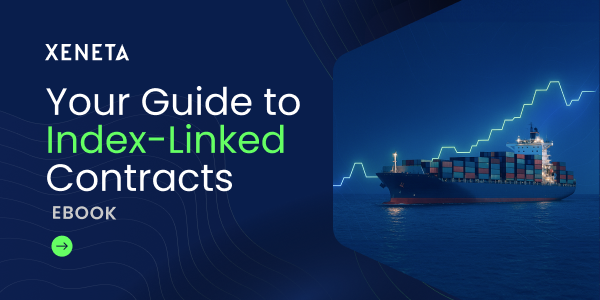March 29, 2016 – Oslo, Norway - Xeneta, the leading benchmarking and market intelligence platform for containerized ocean freight, has utilized its data of global shipping rates to make a startling, and counterintuitive, claim – big volume shippers are not paying the best shipping rates.
According to the Oslo-based company, over the course of the last 18 months, high-volume shippers are actually being locked in to unfavourable long-term agreements, leaving others to take advantage of the advent of low fuel prices, megaship capacities and hyper efficient supply change management.
“Volume no longer necessarily translates to savings,” comments Patrik Berglund, Xeneta CEO. “In fact, in many cases, big volume shippers are paying far above the current Asia-Europe or Asia-US TEU rates.
“These businesses, which are often related to consumer goods, typically sign annual supply contracts with large vendors in order to keep merchandise in their stores, or to supply the giant EU and/or American retail chains. This provides them with supply chain stability, and predictability, but it also locks them into agreements that are fixed, and don’t always deliver value.”
To illustrate this, Berglund points towards the 2015 Far East Main Port - North West Europe Main Port Rates in the Xeneta platform. Here, he notes, there are major differences between long- and short-term contracts.
For a 40’ container shipped as part of a long-term contract the mean market low was USD 1175 and the average USD 1696. Short-term prices were markedly lower, with a mean market low of USD 857 and an average of USD 1355. There was an even greater disparity between minimum prices, with the long-term low at USD 807 and an average of USD 1535. Compare this to the same short-term rates of USD 240 and USD 571.
“It’s a startling difference,” Berglund states. “One that suggests that the big volume shippers are essentially leaving money on the table with every container shipped.”
He also has a clear opinion of who is on hand to pocket it: “We have to look to who the companies are signing these agreements with. Some shipping lines are benefitting of course, but it seems the third party logistics (3PLs) firms are arguably becoming the real winners here.
“It’s become more common for shippers to cut their logistics staff, and overheads, and look to outsourcing. This has fuelled a boom in 3PLs and 4PLs. These firms, which typically work with smaller volume shippers, also sign long-term agreements with some big volume shippers and use those volumes to negotiate lower ocean freight rates. 3PLs are making their significant margins from short- and long-term agreements and carrier kickbacks.”
Berglund concedes that business is business, but notes that all parties need to be aware of the reality of the TEU shipping rates and a disparity that, given the influences of factors such as fuel price, could be set to grow wider and wider. He adds that as TEU rates began to drop in 2014, and oil prices collapsed in 2015, the result was a widening gap between short-term and long-term contract rates.
“We make it our job to have a detailed global picture of containerized freight rates. Any business that ships large volumes of goods should be aware of this prior to engaging in negotiations. Knowledge translates to bargaining power, and if the shippers are going to get the rates that their volume of business deserves then they need to have access to the best market intelligence.”
.png)

-1.jpg)


